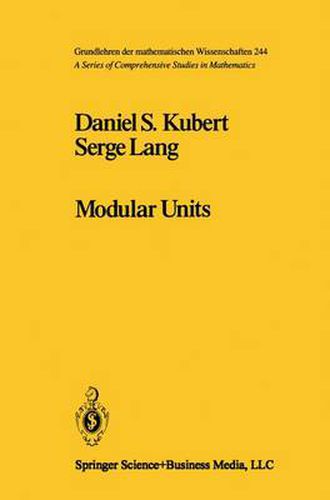Readings Newsletter
Become a Readings Member to make your shopping experience even easier.
Sign in or sign up for free!
You’re not far away from qualifying for FREE standard shipping within Australia
You’ve qualified for FREE standard shipping within Australia
The cart is loading…






This title is printed to order. This book may have been self-published. If so, we cannot guarantee the quality of the content. In the main most books will have gone through the editing process however some may not. We therefore suggest that you be aware of this before ordering this book. If in doubt check either the author or publisher’s details as we are unable to accept any returns unless they are faulty. Please contact us if you have any questions.
In the present book, we have put together the basic theory of the units and cuspidal divisor class group in the modular function fields, developed over the past few years. Let i) be the upper half plane, and N a positive integer. Let r(N) be the subgroup of SL (Z) consisting of those matrices == 1 mod N. Then r(N)\i) 2 is complex analytic isomorphic to an affine curve YeN), whose compactifi cation is called the modular curve X(N). The affine ring of regular functions on yeN) over C is the integral closure of C[j] in the function field of X(N) over C. Here j is the classical modular function. However, for arithmetic applications, one considers the curve as defined over the cyclotomic field Q(JlN) of N-th roots of unity, and one takes the integral closure either of Q[j] or Z[j], depending on how much arithmetic one wants to throw in. The units in these rings consist of those modular functions which have no zeros or poles in the upper half plane. The points of X(N) which lie at infinity, that is which do not correspond to points on the above affine set, are called the cusps, because of the way they look in a fundamental domain in the upper half plane. They generate a subgroup of the divisor class group, which turns out to be finite, and is called the cuspidal divisor class group.
$9.00 standard shipping within Australia
FREE standard shipping within Australia for orders over $100.00
Express & International shipping calculated at checkout
This title is printed to order. This book may have been self-published. If so, we cannot guarantee the quality of the content. In the main most books will have gone through the editing process however some may not. We therefore suggest that you be aware of this before ordering this book. If in doubt check either the author or publisher’s details as we are unable to accept any returns unless they are faulty. Please contact us if you have any questions.
In the present book, we have put together the basic theory of the units and cuspidal divisor class group in the modular function fields, developed over the past few years. Let i) be the upper half plane, and N a positive integer. Let r(N) be the subgroup of SL (Z) consisting of those matrices == 1 mod N. Then r(N)\i) 2 is complex analytic isomorphic to an affine curve YeN), whose compactifi cation is called the modular curve X(N). The affine ring of regular functions on yeN) over C is the integral closure of C[j] in the function field of X(N) over C. Here j is the classical modular function. However, for arithmetic applications, one considers the curve as defined over the cyclotomic field Q(JlN) of N-th roots of unity, and one takes the integral closure either of Q[j] or Z[j], depending on how much arithmetic one wants to throw in. The units in these rings consist of those modular functions which have no zeros or poles in the upper half plane. The points of X(N) which lie at infinity, that is which do not correspond to points on the above affine set, are called the cusps, because of the way they look in a fundamental domain in the upper half plane. They generate a subgroup of the divisor class group, which turns out to be finite, and is called the cuspidal divisor class group.